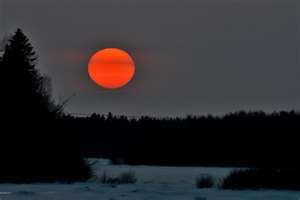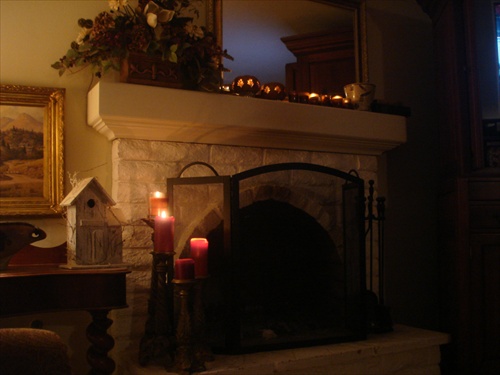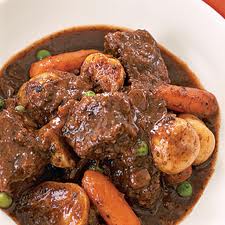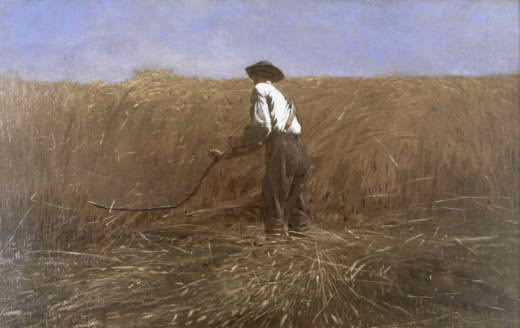Posts Tagged ‘Long Winter’
The Slow Cooker Season
The seasons are a changing, folks. I can feel it — in the morning air, crisp and cool; in the way the sun throws a golden cast over the farm when it sets in a sherbet colored southern sky, but mostly in the way I just want to hunker down and get ready for a long winter.
A few years ago our days were full of a day job, school, sports, sheep and other farm chores. It was a busy time for us but I still wanted to put a heart-warming home-cooked meal on the table when we got home. It was the time of year when I’d reach for my slow cooker. A time when time itself was scarce, but a good meal wasn’t. All I needed was a stocked pantry, a little imagination and a plan. As we went about our busy day a batch of chili, stew, tagine or soup was simmering away, and when we walked through the door the whole house smelled of warm seasonings and fresh food.
To bring slow cooker success into your busy life try these simple tips and in no time you’ll be setting a hearty meal on your table without standing in front of the stove for hours on end.
1. Be budget-friendly: Inexpensive cuts of meat, beans and grains bought in bulk let you use what you need or experiment with a variety of ingredients to find new favorites.
2. Layer: Foods at the bottom of the slow cooker cook faster. Place thicker, denser vegetables and large pieces of meat or those with bones on the bottom.
3. Fill level: A slow cooker should not be filled more than 2/3’s full to ensure food cooks evenly and the liquid doesn’t overflow (remember liquid doesn’t evaporate).
4. Go fat free: Trimming the fat will produce a more flavorful texture and reduce the amount of skimming after cooking.
5. Plan ahead: Keeping portioned containers of chopped vegetables and meats in the freeze are ready to toss in the slow cooker in the morning speeding up the preparation process. When you come home dinner is done!
Slow Cooker Sunday’s
Around our homestead Sunday is the day that takes us outside the kitchen or off the farm, but we still want to end our day with a flavorful meal. The long, slow, hands-off cooking means we can turn cuts of meat like brisket, chuck roast or pork shoulder into a feast. Check out some of our favorites:
- Pulled Pork. Low and slow is the name of the game, and the trick to cooking a pork shoulder into a flavorful sandwich topped with barbecue sauce and served with slaw.
- Beef Stew with Greens. Cook chunks of beef and root vegetables in the slow cooker, then stir in chopped kale or collard greens minutes before it’s ready to serve.
- Pot Roast. Trim chuck roast before slow cooking with parsnips, butternut squash, or potatoes and plenty of onions, carrots and garlic plus tomato paste for rich flavor sauce.
Add these comforting, fuss-free meals to your collection of slow-cooker favorites:
Slow Cooker Pork and Cider Stew
Ingredients:
4 onions, thinly sliced
2 pounds pork loin, trimmed of fat and cut into 1-inch cubes
3 apples, peeled and sliced
6 cloves garlic, finely chopped
3/4 teaspoon fine sea salt
3/4 teaspoon freshly ground black pepper
3/4 cup hard cider or non-alcoholic apple cider
2 teaspoons apple cider vinegar
1 can (15 ounces) white beans, rinsed and drained
Directions:
Layer leeks, pork, apples and garlic in the bottom of a 5- to 6-quart slow cooker and sprinkle with salt and pepper. Pour in cider and vinegar. Cover and cook on low until pork is very tender, about 8 hours. Uncover cooker, stir in beans, and cook on high until heated through, about 30 minutes.
Slow Cooker Asian Short Ribs
Ingredients:
4 pounds short ribs
1/2 teaspoon fine sea salt
1 teaspoon canola oil
3 tablespoons reduced-sodium soy sauce
3 tablespoons apricot fruit spread
2 tablespoons tomato paste
1 tablespoon rice wine vinegar
1 tablespoon finely diced peeled fresh ginger
4 cloves garlic, minced
1/4 teaspoon five-spice powder
4 green onions, thinly sliced
1 tablespoon toasted sesame seeds
Method:
Trim off and discard any large bits of fat from ribs. Sprinkle ribs with salt. Place in slow-cooker. In a small bowl, whisk together soy sauce, fruit spread, tomato paste, vinegar, ginger, garlic, five-spice powder and 2 tablespoons water. Pour mixture over ribs. Cover and cook on low until ribs are very tender, about 8 hours.
Transfer ribs to a platter. Pour liquid in bottom of slow cooker into a glass measuring cup and let stand until fat rises to the top, about 2 to 3 minutes. Spoon off fat and pour liquid over ribs or use as a dipping sauce. Sprinkle with green onions and sesame seeds and serve.
NOW – Ring the Dinner Bell and Come And Get It!!
Simple Wealth and Winter Preps
September is here, folks! I can hardly believe it is just one month until my beloved October. The thought of it makes my heart swell.
This long Labor Day weekend started early with a steel gray glimmer of morning and a breeze that glided over me, soft and cool; the first gentle kiss of autumn. It was still in the 50’s when I ventured outside in my sweatshirt and muck boots, watering and feeding chickens and rabbits. There are no leaves falling yet, but the world is changing, moving ever so slightly from one season to another. You can feel it in the sunrise. You can feel it in the change from our blistering August heat wave. You see it in the evening as the sun sets farther to the south and the rising moon throws a golden cast over the farm.
We are picking tomatoes and zucchini almost daily, little shards of insurance for a small family. A pint-sized mason jar filled with fresh herbs sits on the windowsill sending a wave of fragrance through the house. My lone sunflower is beginning to bloom, tall and big and yellow; the last survivor from marauding birds and scavenging chickens, and a few apples hang on the tree growing fat and juice, until they are plucked off and put into a pie or cobbler or spice bread. Some of the older hens that were beyond being good layers and a rooster were taken to the feed store to be given away. I’ll hold on to the few good layers I have until spring then think about increasing the flock. Production is a big deal on our little farm and those who can’t pull their weight in stocking the kitchen don’t stay around to waste precious feed. Sounds harsh I know, but that’s the reality of farm life.
Winter preps are still at the forefront of my mind. I feel an urgency about getting this farm settled for a long winter, maybe even more so than in past years. The agricultural meteorologist, the one all the farmers listen to for weather forecasts, is calling for an El Nino winter; and that can mean only one thing — RAIN — and lots of it. Making sure the farm is set to handle such storms drives my actions.
The new batch of meat birds is slatted to arrive next week and now that the opossum family has been caught and relocated I am more excited than ever to get some meat in the freezer. I still have a few half chickens left. There are also packages of lamb, the ducks we raised in spring and containers of soup base and cooked down chicken carcasses that can be made into casseroles and potpies. The pantry is pretty well stocked with dry goods like beans, lentil, rice, barley and pasta; all the makings for a hearty and warm winter meal; and with Brianne off to college even the smallest amount of meat and veggies seem to go farther. Even with all this, I’ll make a stock up trip to fill in and take advantage of prices before we see increases caused by this summers’ drought.
The greenhouse now has a roof, a barrier from the wind and rain. The plan is to finish the walls this weekend. With any luck the whole thing will be done in a week or so and I can begin planting root veggies and salad greens in the fall garden. Maybe I’ll even try a few potted veggies that can stay in the greenhouse over winter. One of the nice things about living in an area where you can garden 365-days is that we do not have the pressure to “get seeds in the ground” like other areas of the country.
I still have firewood to bring in and the house to switch over from summer to winter. My list is made and it’s thrilling to cross things off. By the time wood smoke circles the farm we’ll be ready, mark my words. This will be a warm and comfy farm house, glowing and smelling of winter.
I am smiling, folks, for these are all small banks of insurance. Money may be nice, but it can’t beat a warm stew fresh from the farm. Now that’s simple wealth!
Dancing Around the Fire

The Vernal Equinox is celebrated on March 20th, a day that heralds the coming of spring, that mystical moment in time when the ancient’s folklore told of magic touching the earth. Science on the other hand marks the event with changing orbits, axis, rotations and other such astrological and scientific terms.
For me, I much prefer the ancient’s celebration of season, rebirth, fertility, and the welcoming of spring after a long winter; a moment in time when day and night are equal. The day was marked by dancing around a fire in celebration; of the ground being warm and fertile enough for planting; of tree and bush flowering with the promise of a future harvest; of farm animals giving birth. It is not just a day, but a promise; a sign of life continuing, the passing of winter and the coming of summer.
I don’t know about celebrating the day with bonfire and dance, but it will be celebrated; with food and drink of a small farm at the edge of town. Now that’s a promise worth toasting. Aye!
Quick Tips For Homesteaders
Keeping Whites Whiter with Lemons
Dingy napkins, linens even white socks and T’s can be brought back to their brightest white. Simply fill a large pot with water and a few slices of fresh lemon; bring the pot to a boil. Turn off the heat and add your linens or clothing items. Let soak for up to an hour; launder as you normally would. For extra brightness, line dry them on a bright sunny day.
Removing Melted Wax
Candlelight may be romantic, but there’s nothing sexy about prying melted wax out of a candleholder. To remove wax easily, place holders in the freezer for a few hours. The wax should shrink enough that the spent candle slips out easily.
Storing Candles
We all love the glow of a candle lit room on a cold winter’s day. But, when weather is warm and days are long candles are not needed as much. To store candles and keep their true color, wrap in tissue paper and store in a dark place. To keep candles from warping make sure their storage place is cool.
Freshening up potted plants
Potted plants are a great way to bring the outside in during long winter months, but with the dry air of a heated home the topsoil can dry out, making water absorption more difficult. To freshen up potted plants, remove the top 2 to 3-inches of soil using a fork. Refill with fresh soil mixed with a slow-released fertilizer.
Removing Red Wine Stains
For a sure fire way to remove red wine stains, wet the stain with lukewarm water, then sprinkle on a layer of table salt. Rub gently and let stand for 5 minutes. Pull fabric taut across the top of a heat-proof bowl or large pan and secure with a rubber band. Place the bowl or pot in the sink and pour boiling water over the stain from a height of 3-feet. The combination of heat and pressure of the water will eliminate the stain.
Keeping Berries Perfect While Harvesting
When picking berries use several shallow pans, buckets, basket or trays; this prevents the weight of the berries on top from smashing the ones below.
Storing Tomatoes
Tomatoes are not like other vegetables, they should always be kept at room temperature. Large, shallow bowls or platters are perfect and look beautiful in the kitchen. Unripe tomatoes can be placed in a sunny window or in a brown paper bag for a few days to ripen. Be sure to check them every day to catch them at their perfect ripeness.



Recent comments
Aenean nonummy hendrerit mauris. Phasellus porta.